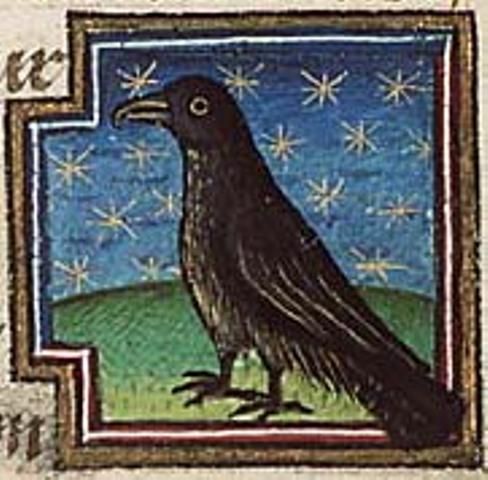















The White Stag
The white stag is a familiar creature of myth and legend. Its origins are likely in the totemic period of early Indo-European society, particularly the northern societies of the Celts and pre-Indo-European cultures, whose subsistence was gained not only through agriculture, but through hunting.1 This dependence on deer may be seen in the zoomorphic Celtic god Cernunnos, depicted as being a man with the antlers of a deer.
The white stag in Celtic myth is an indicator that the Otherworld is near. It appears when one is transgressing a taboo--such as when Pwyll tresspassed into Arawn's hunting grounds, or when Peredur entered the Castle of Wonders in his second adventure at the house of the Lame King. It also appears as an impetus to quest--the white stag or hart often appears in the forests around King Arthur's court, sending the knights off on to adventure against gods and fairies. (C. S. Lewis uses this device at both the beginning and end of The Lion, the Witch, and the Wardrobe.2)
It also appears in French romance and lais as a similar indicator, such as in the lais of Marie de France, when Guigemar happens upon the strange sight of a white doe with antlers. He wounds the strange, hermaphroditic--note that word--animal, which curses him to grow up and fall in love.
It is also an important element of Hungarian mythology, which believed that a great white stag led the brothers Hunor and Magar to settle in Scythia. Thus were established the Huns and Magyars.
To Christians, the white stag came to symbolize Christ, perhaps in part inspired by the St. Eustace legend, wherein the Roman soldier Eustace is hunting, and happens upon a deer with a cross between his antlers. Eustace converts on the spot, and is put through numerous tragedies, persecutions, etc., including the death of his family, until being miraculously reunited with them. However, it is clear that this pious legend has pagan predecessors.
It is also worth noting that in Christian iconography, the unicorn is a symbol for Christ. There is a close identification between the white stag and the unicorn, and it can be reasoned that the white stag is the equivalent of the unicorn in these northern cultures, which do not record the existence of unicorns.3
The white hart also was the heraldic symbol of England's King Richard II.
The first thing to examine is the color: white is a symbol of purity, while also a symbol of otherworldliness. The white stag in Pwyll penduc Dyfed has a white body with red ears--the typical colors of otherworld creatures (the hounds of Arawn are also this color).
It is also associated with the sun; in Christian iconography, the stag appears with the sun between its horns. Earlier gods associated with the stag were also nature deities: Cernunnos, Fionn, Gwynn ap Nudd. Santa Claus--that half-memory of Odin/Thor--is drawn by eight reindeer--who may or may not be white. (If they live at the North Pole, they most likely are ;-)
The deer, finally, was a source of life, an important resource for early man.
Ultimately, the white stag is not only a creature of the gods, but is a god himself, symbolizing the creative life force of the universe--sex, life, and also death.
1. This split life between agriculture and hunting is readily seen in the Fenian Cycle of Irish literature--Fionn Mac Cumhill and his band, the Fianna, spend half the year in the forests, hunting, and the other half of the year in the service of the king. Fionn's original name was Demne, a word for dear, while his wife Sabd was transformed into a deer by a druid, and his son and grandson's names contain references to deer: Oisin "little deer," Oscar "deer-lover."
2. Oddly enough, the White Witch's sleigh is drawn by a white stag, and these are the first things Edmund sees when enterin Narnia, while it is a white stag which leads the children back to England. Perhaps this is an example of Lewis's occasional belief in relativism, that even the evil things of this world have some place in God's plan, though we can't see it. The white stag may be pulling the White Witch, but this is what draws Edmund, and then later the elder siblings, into Narnia. Otherwise, it is doubtful that everyone would have ever believed Lucy.
3. It is worth noting that the white stag in Peredur is described as having one horn--which is how it is described in the second continuation of Perceval. The Welsh version most likely originally described a white stag; the French turned that into the more familiar unicorn, and the later Welsh redactor of Peredur returned the animal to a stag, but keeping the odd image of a single horn.

Back to "W" | Back to JCE
Home
Mary Jones © 2004